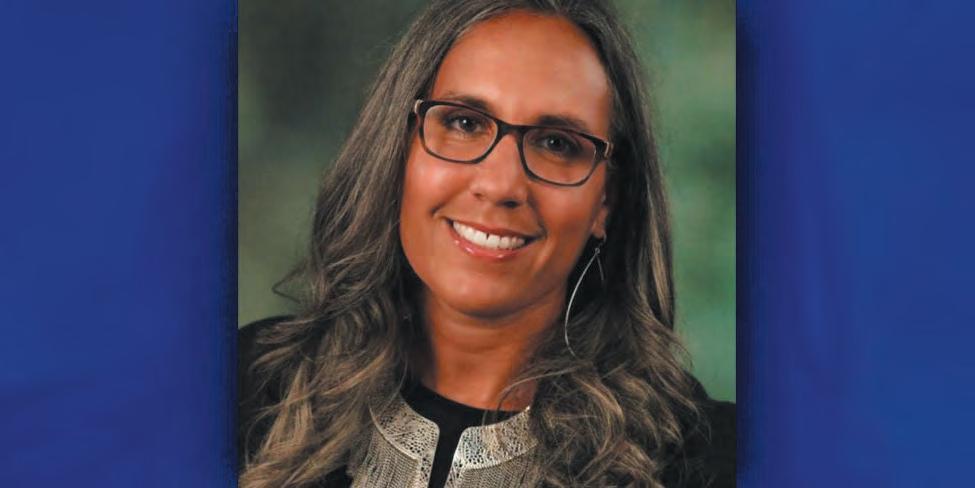
3 minute read
Internet Pioneer Helped Create Technologies for Web Animation
Ma ny Black women have made significant strides within technology, yet they m sented across the computer sciences spectrum. According to the United Negro College Fund, Black women make up only 3% of the tech workforce, and less than 0.5% have leadership roles in Silicon Valley.
These statistics did not keep Lisa Gelobter (b. 1971) from living her dream. As a computer scientist, technologist, and chief executive, she has spent 25 years in the software industry. By working on several pioneering internet technologies and creating web animation and online video (Brightcove and Joost), she has designed products used by millions of people.
Gelobter was instrumental in the creation of Shockwave, a technology that formed the beginning of web animation, and oversaw its product release cycle. She coded the ActiveX control for the player and coordinated the engineering transition.
A Brown University graduate (at age 20), Gelobter’s degree in computer science with a concentration in artificial intelligence and machine learning was instrumental in launching her career. She served as chief digital service officer for the U.S. Department of Education during Barack Obama’s presidency and led the team that built the U.S. Department of Education College Scorecard.
This is an online tool, created by the federal government for consumers to compare the cost and value of higher education institutions in the U.S. At launch, it displayed data in five areas: cost, graduation rate, employment rate, average amount borrowed, and loan default rate.
Gelobter’s background in strategy development, business operations, user-centered design, product management, and engineering is expansive. She served as chief digital officer for BET Networks and was a member of the senior management team for the launch of Hulu.
Little is known about Gelobter’s childhood. Her father was Jewish and from Poland, and her mother was Black and from the Caribbean. There is no public information available about where Lisa Gelobter was born or raised.
In 2019, Gelobter was named one of Inc’s 100 Women Building America’s Most Innovative and Ambitious Businesses. Serving on boards for the Obama Foundation, Time’s Up, and the Education Trust, she is proud to be a Black woman with a degree in computer science.
Today, Gelobter runs her own company, tEQuitable (2006), an independent, confidential platform to address issues of bias, discrimination, and harassment in the workplace, according to its website. She raised more than $2 million for the start-up, making her one of the first 40 Black women ever to have raised more than $1 million in venture capital funding. She is also a former member of the New York Urban League STEM Advisory Board and was named one of Fast Company’s Most Creative People. You can encourage young girls by helping them learn about pioneering women in STEM with faces like theirs who shaped the world. Read with them T.M. Moody’s “ African American Women Pioneers in STEM Activity Book.” It’s part activity book, part educational workbook. This article originally appeared in Post News Group.

To protect your finances and family in the long term, it’s important to not only reevaluate your saving and spending, but also commit to creating a more holistic financial plan. Consumers are seeking stability and preparedness in today’s uncertain economic environment, according to a recent Consumer Sentiment Tracker study by Lincoln Financial Group. With ongoing inflation and market volatility, 56% of respondents cited protection from risk as being most important to them. When it comes to thinking about their finances, people said they have the greatest interest in protecting their family (39%) followed by their income (26%).
To achieve a stronger financial future, don’t neglect your finances — instead, add a little TLC (Talk, Learn, Commit). Create a robust financial plan using these three tips from Lincoln Financial:

1Talk about it. Financial conversations play a crucial role. Be transparent with your loved ones about financial priorities so you can set expectations and work toward your shared financial goals. Initiate ongoing discussions to stay on track with everything from saving for retirement to paying for a long-term healthcare event, which can happen suddenly and be very costly. Also, consider talking to a finan - cial professional who can help identify solutions that best meet your individual needs, as well as drive better outcomes. Lincoln’s research found those who work with financial professionals are more likely to prioritize retirement savings (26% vs. 10%).

2L earn more about tax-deferred investments. Life insurance can be more than just a death benefit, with some types of policies offering income replacement for unforeseen events. It can also protect your financial security from the impact of taxes, market volatility and longevity. It’s not just for individuals and families either, but businesses too. Also, consider diversifying your portfolio with an annuity, which can provide protected growth and monthly lifetime income to help cover expenses in retirement and ensure you have a stream of income.

3Commit to maximizing your workplace benefits. Look into supplemental coverages like disability, accident and life insurance that may be available through your employer. Solutions like these protect against unexpected events that can disrupt your ability to provide for your family or drive you into additional debt. If you have an employer-sponsored retirement plan, make sure you are contributing and getting a match, if offered. Tap into any financial wellness tools offered at work to help provide you with an accurate picture of your holistic financial situation and lower stress.
Visit www.lfg.com for more tools and resources. With a robust plan, you can help ensure a solid financial future for you and your family.

Statepoint










